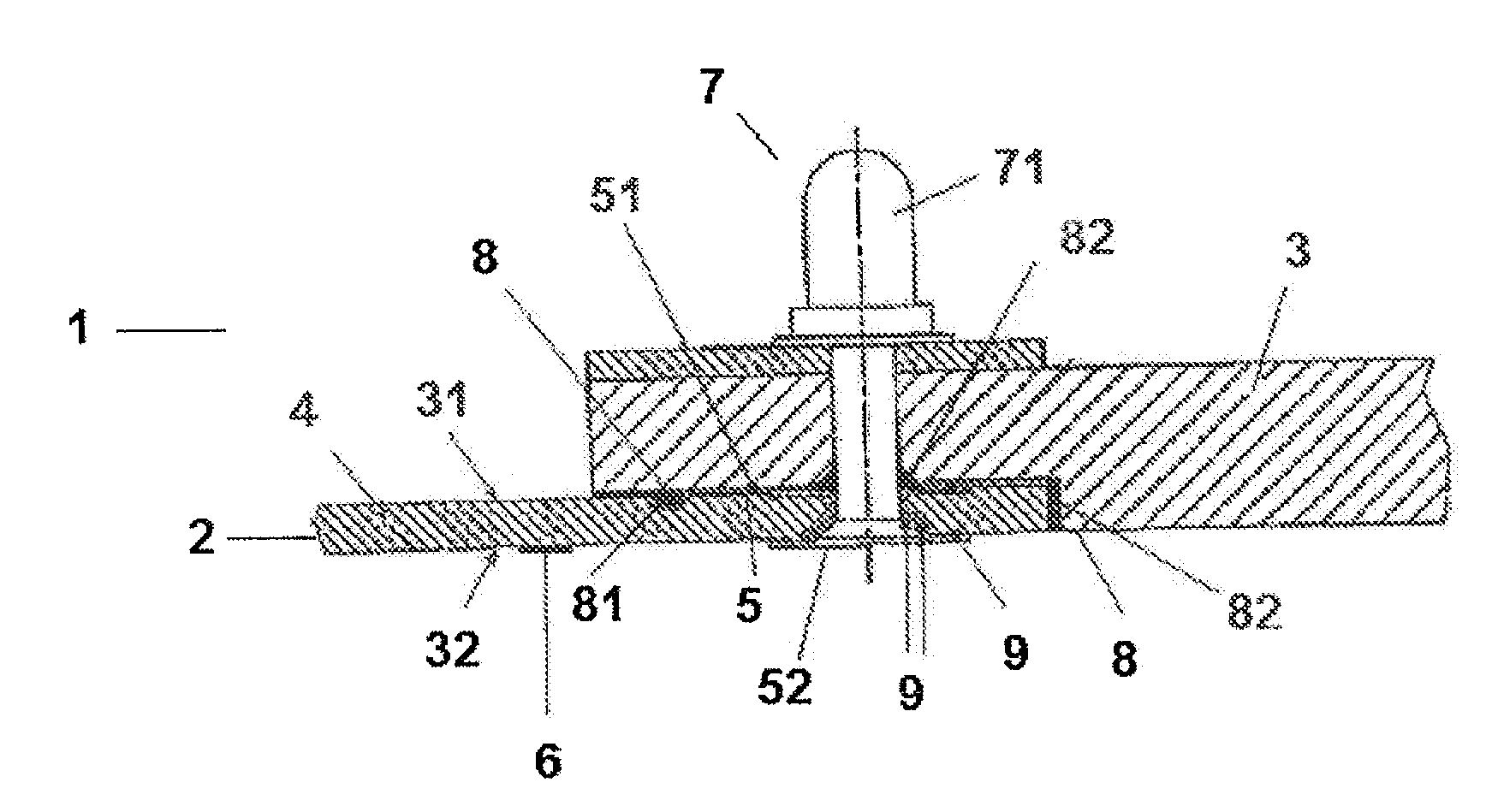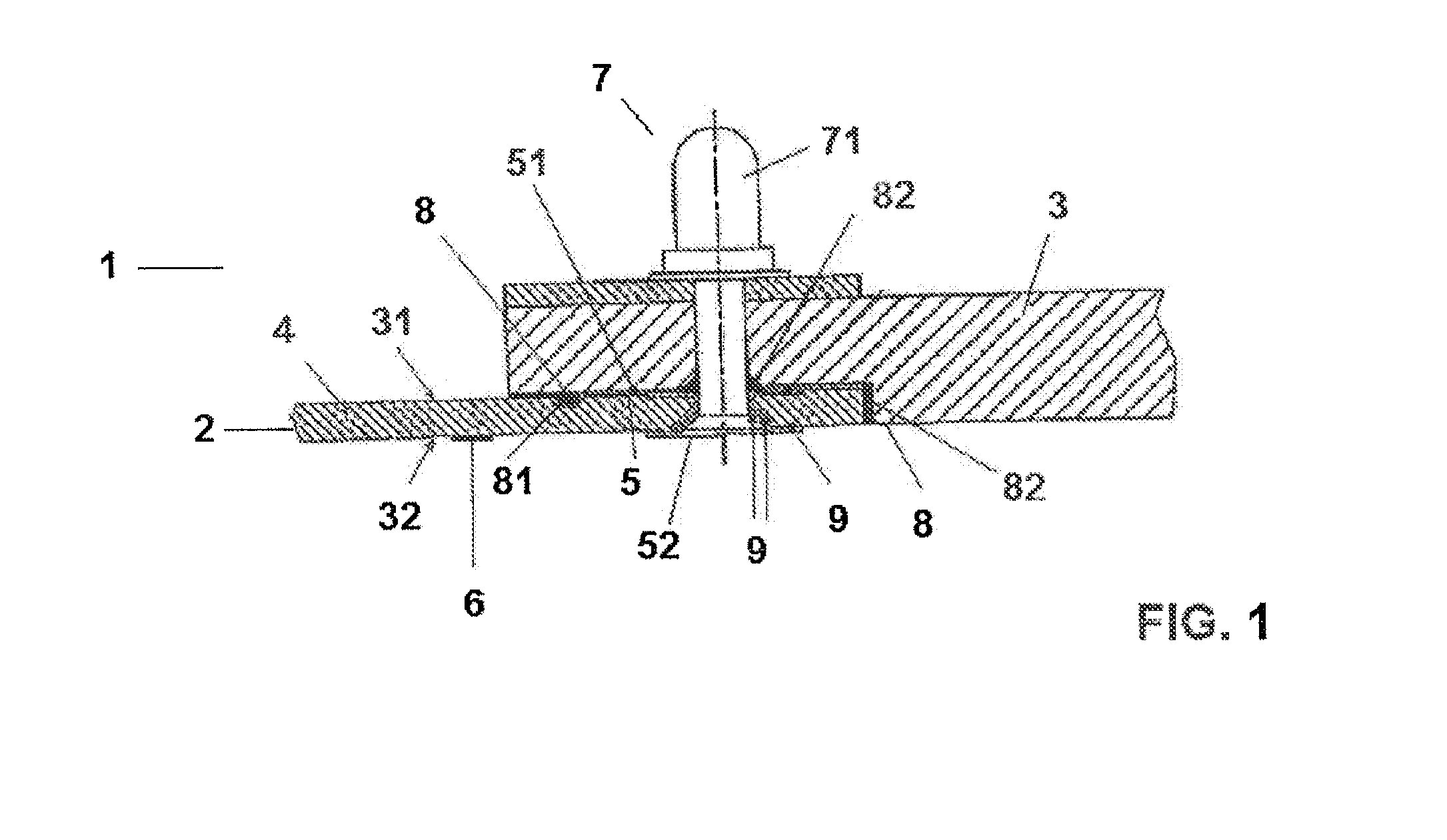Device for installing conducting components in structures
- Summary
- Abstract
- Description
- Claims
- Application Information
AI Technical Summary
Benefits of technology
Problems solved by technology
Method used
Image
Examples
Embodiment Construction
[0015]This invention refers to a device 1 for installing conducting components 2 or equipment, preferably made of metal, on structures 3, preferably aeronautic structures, of high electrical impedance, these structures 3 preferably being made of composite material. The interior of these structures 3 usually comprises highly flammable material, such as fuel. In general, these structures 3 belong to any element of a fuel tank which stores any gas or mixture of gases whose vapour can ignite at energies of 200 microjoules and up. This value, for the specific case of aeronautical structures, is given by the characteristics of the kerosene fuel used in aviation. The device 1 of the invention is capable of providing the component 2, which is connected to the structure 3 of the aircraft, with the electrical continuity necessary to prevent damage both to the structure 3 and the component 2 in the case of an electrical discharge. This discharge may come either from atmospheric discharges, for...
PUM
| Property | Measurement | Unit |
|---|---|---|
| Fraction | aaaaa | aaaaa |
| Electrical resistance | aaaaa | aaaaa |
| Metallic bond | aaaaa | aaaaa |
Abstract
Description
Claims
Application Information
 Login to View More
Login to View More - R&D
- Intellectual Property
- Life Sciences
- Materials
- Tech Scout
- Unparalleled Data Quality
- Higher Quality Content
- 60% Fewer Hallucinations
Browse by: Latest US Patents, China's latest patents, Technical Efficacy Thesaurus, Application Domain, Technology Topic, Popular Technical Reports.
© 2025 PatSnap. All rights reserved.Legal|Privacy policy|Modern Slavery Act Transparency Statement|Sitemap|About US| Contact US: help@patsnap.com


